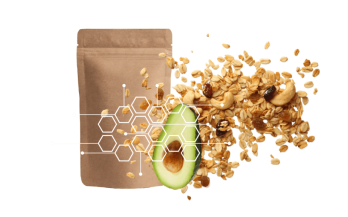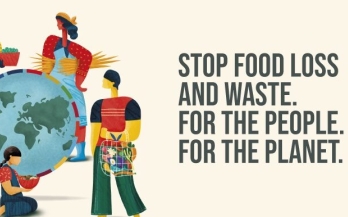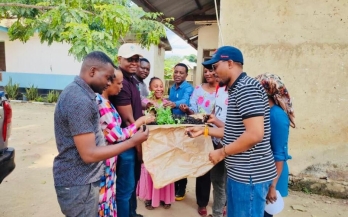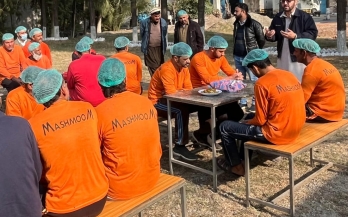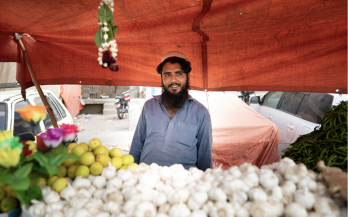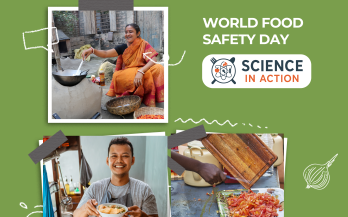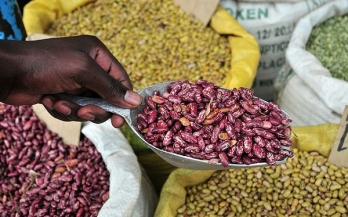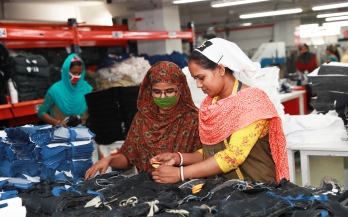Food packaging is ubiquitous in the modern world but also easily forgettable: once we’ve dumped the crackers out of their bag and into our hand, or scraped the last of the yoghurt out of the bottom of its plastic pot, we usually toss the packaging into the bin without a second thought.
If food waste were a country, it would be the world’s third-largest greenhouse gas emitter, after the U.S. and China: not only does it represent the use of resources and environmental impact without a clear benefit, but as it decomposes in landfills, it releases methane and carbon dioxide. What if some of this could be avoided, and in a way that improved access to safe, nutritious foods for those who need them?
In Tanzania, nearly 70% of the population is under 30 - a generation full of energy and potential. Yet, for many young people, finding meaningful work isn’t easy. Agri-food jobs could offer huge opportunities, but the section is often seen as outdated and unappealing to youth. The Global Alliance for Improved Nutrition (GAIN) funded by the Master Card Foundation through AGRA is working to shift this narrative through the Youth Entrepreneurship for the Future of Food and Agriculture (YEFFA) initiative, supporting young Tanzanians to find jobs and turn the sector into a vibrant space for innovation.
Every day, thousands of workers across Pakistan’s Hattar Industrial Estate (HIE) clock into jobs that power the country’s manufacturing sector. From ceramics and textiles to printing, chemicals, and food production, these industries depend on a steady, skilled workforce. Yet, behind the manufacturing lines are workers whose nutritional needs are often overlooked. Improving workforce health and productivity can yield broader economic dividends by reducing absenteeism, improving industrial output, and lowering healthcare costs associated with non-communicable diseases (NCDs).
Four years after the landmark 2021 United Nations Food Systems Summit (UNFSS), the urgency of transforming food systems is growing. With just five years left until the 2030 Sustainable Development Goals (SDGs) deadline, momentum is growing, but so are the challenges. The UNFSS+4 Stocktake, held in July 2025, reflects a remarkable evolution in how countries and partners are reimagining food systems to be more inclusive, sustainable, and resilient. Since the first Stocktake (UNFSS+2), countries have moved from vision to action: 128 nations now have national food systems pathways, 155 have appointed National Convenors, and 39 have revised their pathways into detailed action plans. Voluntary reporting has increased, signalling strong political commitment.
Food system transformation (FST) is fundamental to human progress. Feeding and nourishing the world. Creating jobs and reducing poverty. Managing the environment. Avoiding catastrophic climate change. Building resilience to shocks. These are the building blocks of human and planetary wellbeing.
In April 2025, we took part in the Act4Food Youth Leaders Workshop held in Arusha, Tanzania, a truly transformative experience that deepened our already strong convictions of the power and potential of young people to shape the future of our food systems. Organized by ACT4FOOD with support from the Global Alliance for Improved Nutrition (GAIN), the workshop brought together 22 youth leaders from across the globe working under the ACT4FOOD banner, along with GAIN staff and additional food systems youth leaders from Tanzania.
Every year, unsafe food makes 600 million people sick and claims 420,000 lives – including 125,000 children under five (World Health Organization, 2015). These aren’t just numbers; they’re a call to action. At GAIN, we are using science and evidence to change this. For World Food Safety Day, we are spotlighting 10 ways we’ve advanced food safety over the past year.
In Tanzania, 85- 90% of the land is cultivated by smallholder farmers majority of whom face challenges in getting access to quality seeds and assured markets for their produce, thus limiting their capabilities to produce quality produce and generate steady income. Currently, 57% of pregnant women in Tanzania are anemic. Additionally, according to the Tanzania Demographic and Health Survey 2015 (TDHS), 58% of children under the age of 5 years in the country were anemic.
The number of adults living with diabetes has more than doubled over the span of 30 years, rising from 7% in 1990 to more than 14% in 2022.1 An estimated 828 million adults worldwide currently live with diabetes, and if trends continue, this is projected to reach 1.3 billion by 2050.2
